Reforming Pakistan’s ‘Dens of Terror’
Pakistan's "madrassas" have been described as "jihad universities" because of their ties to the Taliban and Islamic extremists, but a small-scale indigenous effort to reform the religious schools could be making more progress than the combined forces of the American, British and Pakistani governments.
Pakistan’s “madrassas” have been described as “jihad universities” because of their ties to the Taliban and Islamic extremists. An expert on the region reports that a small-scale indigenous effort to reform the religious schools could be making more progress than the combined forces of the American, British and Pakistani governments.
Considering the audience, I was caught slightly off guard when a middle-aged woman dressed like a five-foot piece of saltwater taffy — pink heels, pink purse, pink pants, pink tunic (and, of course, head scarf) — mounted the podium and began expounding on the virtues of Adam Smith’s economic philosophy. In front of her, 25 mullahs sat around a U-shaped table in the conference room of a Karachi hotel, scribbling furiously in their notebooks, craning their necks to see the whiteboard and peering over one another’s shoulders to be sure they hadn’t missed any salient points amid the deluge of unfamiliar names. They all hailed from a remote part of Pakistan, and they wore a variety of checkered turbans and shawls. Some had donned colorful, hand-stitched prayer caps studded with hundreds of tiny mirrors. The woman in pink, a doctor in Islamic jurisprudence from Karachi University (where she teaches in the department of Quran and Sunnah), explained the core tenets of capitalism. And she had a surprising message: Free-market economy and “the invisible hand” are totally compatible with Islam. In his time, she reminded them, the Prophet Muhammad was out busting up monopolies himself.
Last fall, when Hafez Khalil Ahmed first invited me to attend a 10-day “madrassa” workshop he planned for early December, I had no idea what to expect. Ahmed, apparently in his 30s, a soft-spoken man with freckles, a wide neck and a full but not scruffy beard, runs a large madrassa, or Islamic seminary, in Quetta, the provincial capital of Baluchistan in southwestern Pakistan. His madrassa is just a few hours’ drive from Kandahar, Afghanistan; it doubles as the regional headquarters for Jamiat Ulema-i-Islami (JUI), a hard-line political party and stalwart supporter of the Taliban.
Since 2001, the connection between madrassas like Ahmed’s and Islamic militancy has been a source of intense debate. Most of the top leaders of the former Taliban government in Afghanistan had graduated from Pakistani madrassas. Mullah Omar, head of the Taliban and self-declared “amir ul momineen,” or leader of the faithful, didn’t attend one, but he was given an honorary degree from Darul Uloom Haqqania, a sprawling madrassa with more than 3,000 students, located about two hours’ drive from the Afghan border. A June 2000 piece in The New York Times Magazine described Haqqania as a “jihad factory.” In other articles, Pakistan’s madrassas have been called “dens of terror” or “jihad universities.” In October 2003, former Defense Secretary Donald Rumsfeld distributed a memo throughout the Pentagon that asked: “Are we capturing, killing or deterring and dissuading more terrorists every day than the madrassas and the radical clerics are recruiting, training and deploying against us?”
Ahmed was once a firebrand himself; after the Sept. 11 attacks in the United States he was filmed leading a procession through the streets of Quetta, chanting “Long live Sheikh Osama” and “Long live Mullah Omar.” But then, after hearing more and more Afghans criticizing the Taliban’s rule, he changed his mind. “We thought the people of Afghanistan supported the Taliban,” he told a reporter that fall, “but we were wrong.” Since then, he’s made it his mission to convince anyone who will listen that the Taliban’s ideas are backward and misleading. Ahmed says he is “trying to correct wrong perceptions about Americans….” To begin, he targeted those he knows best: madrassa teachers.
According to Ahmed, the aim of the 10-day workshop, titled “Deeni Madaris [religious madrassas] and the Modern World,” was to “close the huge gap between these [religious] people and the rest of society.” He believes that exposing the mullahs to new ideas and encouraging interfaith dialogue offer a way to do it. “These people have been left alone in the cave of time,” one lecturer at the workshop told me. “Now they are being woken up to this bizarre reality, where they can’t be put on hold on the phone because there is music playing in the background” — Islamic fundamentalists consider music un-Islamic — “and they can’t even stand in an elevator.” Such stories could almost pass for comedy if the issue — that is, the minds of a generation of young men and women — weren’t so serious.
When I arrived in the gaudy lobby of Karachi’s Mehran Hotel in the first week of December, I expected to find the workshop filled with big-bearded men with pained expressions on their faces as they sat through dull, exhausting lectures. Previous interactions with madrassa teachers convinced me that they wanted little part in the debate over how to reform their schools.
One of my assumptions was correct: They do, in fact, have bushy beards. In the lobby of the hotel, plenty of other guests stopped to stare as the “ulema,” or religious scholars, passed in their tunic-and-baggy-pants attire. But so that the attendees wouldn’t become bored and tune out, Ahmed had invited a dynamic and impressive cast of speakers.
His idea was to induce a kind of shock therapy; judging by the expressions on the mullahs’ faces when the woman in pink entered the room, he succeeded. Two days after the Adam Smith lecture, a Shiite Muslim scholar proposed a provocative, unorthodox way of reading the Quran, borrowing heavily from Jacques Derrida’s theory of deconstruction. Derrida, a staunch atheist, believed that the meaning of texts are fluid and subject to infinite interpretations, depending on the reader, his/her history, his/her environment, the time, etc. “In the Quran, Allah told us to go on ‘hajj’ [pilgrimage to Mecca] in caravans on camels. But times have changed,” said the scholar, who had studied both in Najaf, Iraq, under Grand Ayatollah Sistani, and at the University of North Carolina, where he researched the Synoptic Gospels. “Besides the ‘kalma’ [profession of faith], everything in the Quran is moving.”How did Ahmed convince a bunch of set-in-their-ways mullahs to leave their madrassas and villages for two weeks to come to hear lectures trumpeting the virtues of America and Western civilization? “Because of my background, people don’t refuse when I ask them to come,” he said. Personal connections and family influence go a long way in Baluchistan’s tribal society: Contemporaries of Ahmed’s deceased father respect him for that reason, and younger generations look to their elders for guidance. Plus, Ahmed’s madrassa, the political party JUI and all of the mullahs who attended the workshop belong to the Deobandi sect, the same school of thought that Mullah Omar, the Taliban and most people residing in Pakistan’s border areas subscribe to. And in Pakistan, sectarian affiliations are nearly as important as tribal ones. So Ahmed, armed with these natural advantages, invited just the kinds of people that conservative teachers from Sunni madrassas don’t typically interact with: women (especially ones who favor hot pink), Shiites (whom many Deobandis consider infidels) and even a blond, blue-eyed American (yours truly).
Nonetheless, Ahmed isn’t organizing these workshops alone. (December’s was the third in the last six months.) Someone has to pay, and that’s where the Washington, D.C.-based International Center for Religion and Diplomacy (ICRD) comes in. The ICRD has a record of faith-based conflict resolution in places like Sudan and Iran. In Pakistan, its strategy is to take small groups of mullahs, immerse them in seminars like the one on Adam Smith and then sit back and let these new ideas germinate. While the American, British and Pakistani governments have spent tens of millions of dollars trying to reform Pakistan’s madrassa system at a macro-level, the ICRD has opted for a more cost-effective — and perhaps fruitful — alternative.
Islamabad’s most recent effort at handling the daunting task of madrassa reform proposes a trade-off: Any madrassa that registers with the Ministry of Religious Affairs is given the status of a university, which means that its degrees are recognized as equivalent to those handed out at a secular school. Technically, registration is designed to oblige the madrassas to teach “modern” subjects like science, computers, English and math. Yet at least two major problems have cropped up: One, government officials think that checking “registered” beside the name of a madrassa indicates that it’s on the path to reform; and, two, many of the madrassas have ignored their end of the deal.
Another impediment to progress, some think, is the person in charge of the government’s program, Ejaz ul-Haq. Haq is Pakistan’s minister of religious affairs and the son of the late Pakistani president and longtime military dictator Gen. Zia ul-Haq. With funding and support from the CIA and Saudi Arabia, Gen. Zia oversaw the boom of madrassas in Pakistan during the 1980s. Not only is it ironic that the son is now tasked with controlling a phenomenon unleashed by his father, but many question whether the younger Haq has the will to succeed in the effort. I asked one of Ejaz ul-Haq’s predecessors whether the government’s lethargy is due to an institutional lack of interest or a personal one. “I think it’s both,” said Mehmood Ghazi, who was minister of religious affairs from early 2000 until August 2001. “But definitely on the part of Ejaz ul-Haq. Frankly speaking, I don’t know what his priorities are. But he has not taken as much interest in madrassas as would be expected from the son of Gen. Zia ul-Haq.”
More than 14,000 registered madrassas are spread across Pakistan. I have visited several dozen, and although Haq boasted to me that “we have them on their back foot” and that “we can get everything we want from the registration process,” I have seen little impact from four years of government programs. What Dr. Abdul Razzaq Sikander of the Binori Town madrassa in Karachi told me was typical: “We have been doing this for hundreds of years and we are teaching the religion that we believe to be the true religion.” On the issue of introducing non-Islamic subjects into the curriculum, Sikander replied: “In the West, someone studying to become a doctor doesn’t have to take an engineering class. Why should our specialists have to take other courses [like science or math or English]?”
The approach pursued by Ahmed and the International Center for Religion and Diplomacy doesn’t focus on quantifiable goals like the “number of madrassas registered” or the “number of computers per madrassa.” Instead, they aim to effect a change in the overall approach inside the madrassas regarding how Islam is taught and how the outside world is portrayed. By keeping the numbers of participants small, Ahmed and the international center try to create an environment where attendees are relaxed and willing to admit mistakes. On the third day of the workshop, a burly, lumberjack-esque mullah from a village an hour from the Afghan border raised his hand. “How have we left the guiding principles of Islam and created all these problems for ourselves?” he asked. One of the seminar instructors had just explained that Wal-Mart regularly outperforms the entire national economy of Pakistan. It created a stir in the room. One store chain? Versus our whole country? “Is there a way out of this hole?” the lumberjack wanted to know. His humility smashed my prior characterization of madrassa teachers as arrogant and uncompromising. These workshops may be conducted on a small scale for now, but with all of these teachers returning to their madrassas, each of them with several hundred students, the impact could be tremendous.
Abbas Hussein, a specialist in training teachers, presided over the second half of the workshop. He introduced myriad methods and techniques for teachers to engage their students. One of the goals of the workshops, said Rashid Bokhari, the ICRD representative in Pakistan, is to “shift the focus from teacher-centered learning to student-centered learning.” According to Hussein, a man in his 50s whose brilliance would be intimidating if it weren’t for his disarming Pee Wee Herman-style laugh, the biggest deficiency in madrassa education is the lack of interactive learning. “Usually, all these teachers do is yak, yak, yak,” he told me. Without interaction or debate, “everyone — students and teachers — suffers from ‘arthritis of the categories.’ ” Age-old concepts, or “categories,” are passed down from teacher to student, untouched by contemplation or reflection. Students then pass them down to their students, and so on. To question a concept is perceived as an affront to the teacher. “This [educational barrier] is a mental disease of the age we live in,” said Hussein.Hussein told the mullahs that, amid their intense (he tactfully used the word dedicated) focus on Islam, they were neglecting parts of their brain. To illustrate this, he sketched out Howard Gardner’s theory of multiple intelligences on the board. Gardner’s theory classifies nine types of intelligence: verbal/linguistic, logical/mathematical, visual/spatial, bodily/kinesthetic, musical, naturalistic, interpersonal, intrapersonal, and existential. Currently, Hussein said, a madrassa education utilizes only a few. The mullahs agreed. They eventually all concurred that teaching non-Islamic subjects could be beneficial for their students’ intelligence. Some of them told me afterward that they planned to incorporate science and math into their teachings as soon as they got home.
Later, I asked Hussein how he thought the ulema had absorbed Gardner’s theory. “I expected more resistance from them,” he admitted. “I have been to similar workshops in the past and been asked if Howard Gardner is a Jew.”
I was snacking on tomato-and-mayonnaise breakfast sandwiches one morning when a mullah grabbed my hand. The previous night, while flipping through the channels on the television in his room, he had “paused” on WWE, or World Wrestling Entertainment. Now he looked at me with a quizzical expression: What is the deal? Are those women with the big breasts really their wives? Why don’t the guys in spandex bleed more when they get smacked on the head with a foldable chair? Finally, he had the chance to put his questions to a flesh-and-blood American. “I have seen foreigners in the market in Quetta,” he said, “but you are the first who I have shaken hands with and eaten with.” With all the Stars and Stripes flags being waved in the crowd, he naturally assumed that pro wrestling was a pastime for Americans as a whole. I explained that WWE wrestling isn’t real, and no, not all women in the United States wear flag-printed bikini tops in public. He looked a little disappointed, as if his idea of grossly behaving Americans was somehow less complete.
On one of the last days, we took a field trip to St. Thomas Theological College, the second-largest Protestant college in Pakistan. We went on foot and immediately had to weave through eight lanes of Karachi traffic — which means 10 or 12 “lanes” of cars, motorcycles, rickshaws and buses. The mullahs shuffled across the street, giggling as their turbans unraveled and sandals went flying off their feet. When we arrived at the college’s church, Dr. Pervaiz Sultan, the middle-aged, spectacled principal of St. Thomas, welcomed us into a classroom. The mullahs squatted in children’s chairs at knee-high desks. Once we were seated, five men filed into the room. They assembled behind a table with a harmonium and a pair of tablas [drums], and broke into a hymn. I couldn’t make out the verses, but the chorus repeated, “Badshah aye,” or “The King has come.” With the exception of one or two, who couldn’t bear to watch and fumbled with their phones, the visitors had fixed their gaze on the singers. On the walk back to the Mehran Hotel, I asked Abdul Rauf, a small-framed man wearing a hand-stitched turquoise prayer cap, whether he had ever seen music performed before. He shook his head. “That was my first time even in a church,” he said. He pursed his lips and made the face of someone who is pleasantly surprised — but can’t quite admit it.
On the final day of the workshop, Maulana Mohammad Amin, one of the most senior workshop participants and a squat man with a maroon, henna-stained beard, stood on the same podium where the woman in pink had stood before. During a five-minute speech, his voice rose and fell with the dramatic flair of a Baptist preacher. He goaded his fellow mullahs to act, to inspire a revival in Islamic education. “This is now our responsibility,” his voice boomed. “We have to ask ourselves: How can we better educate our children? In the future, we will go forward with new techniques and new thoughts.” He said he will “always be lukewarm to the idea of ‘modern’ education,” but that “we cannot bring good religious and social change until we accept [these subjects].”
Mohammad Amin paused and then added: “This week, a lot of my misperceptions have melted away. We had a lot of bad information about our own political and religious leaders. I am angry I believed this. Just as the West has bad information about us, we had bad information about the West.” All 25 of the mullahs listened intently, nodding and scratching their beards. A few mumbled “al hamdulilla” — Praise Allah — under their breath. It seemed that some things were sinking in.
Your support matters…Independent journalism is under threat and overshadowed by heavily funded mainstream media.
You can help level the playing field. Become a member.
Your tax-deductible contribution keeps us digging beneath the headlines to give you thought-provoking, investigative reporting and analysis that unearths what's really happening- without compromise.
Give today to support our courageous, independent journalists.
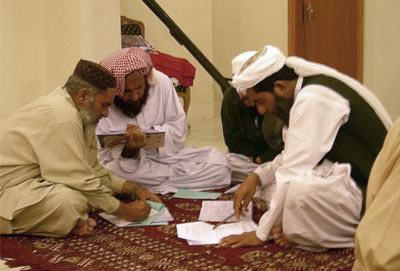
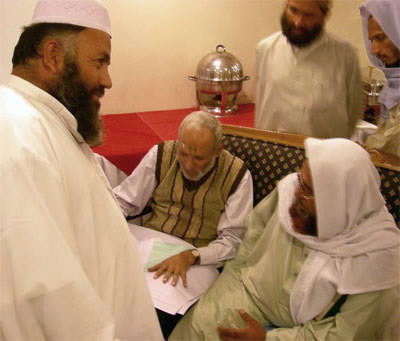
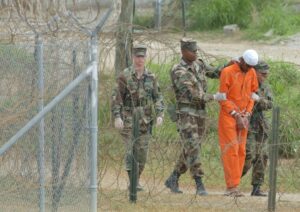
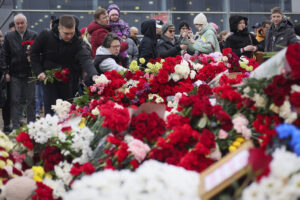
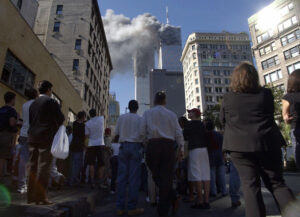
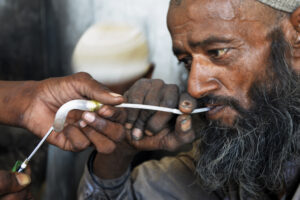
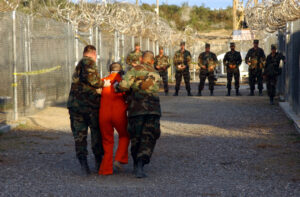
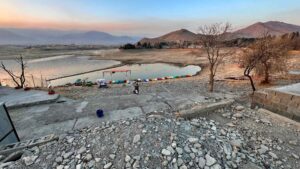
You need to be a supporter to comment.
There are currently no responses to this article.
Be the first to respond.